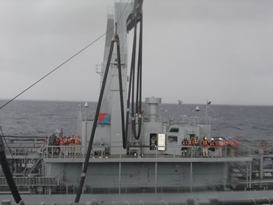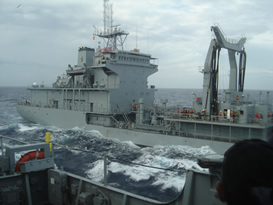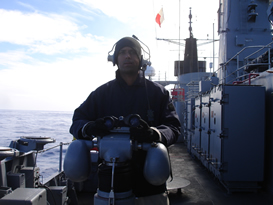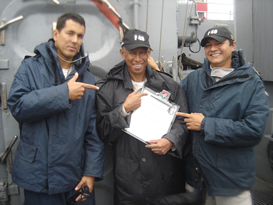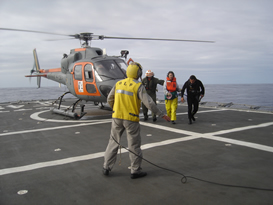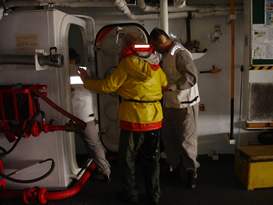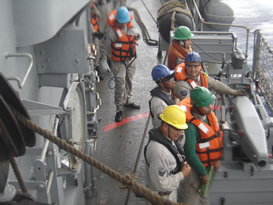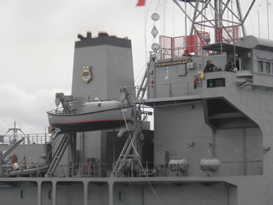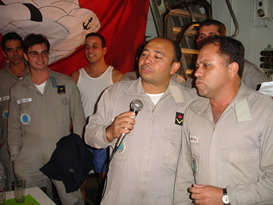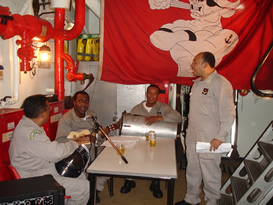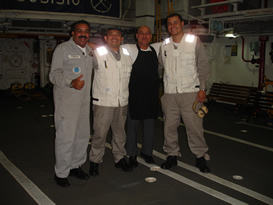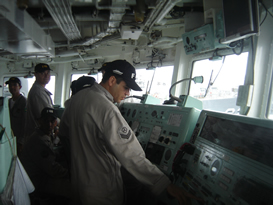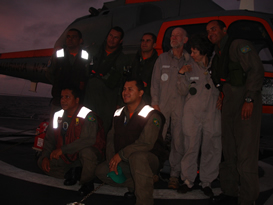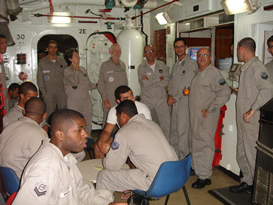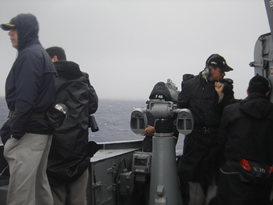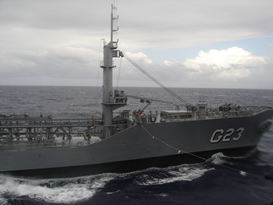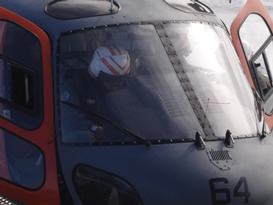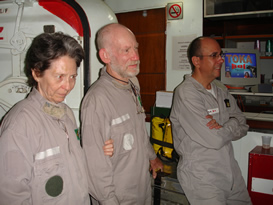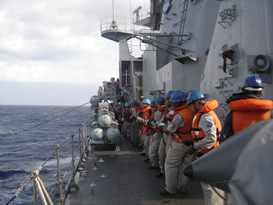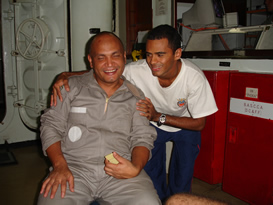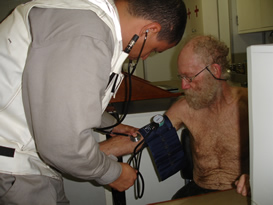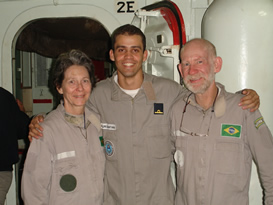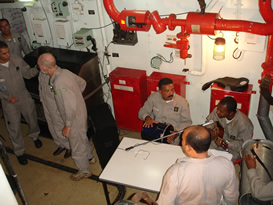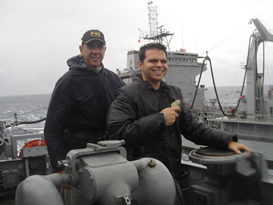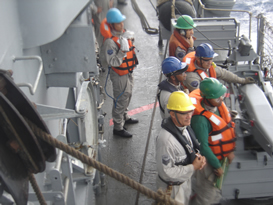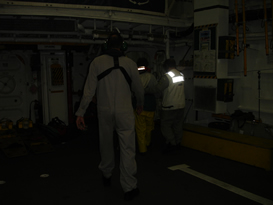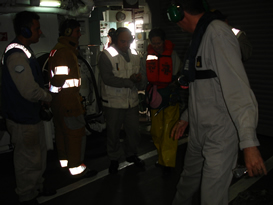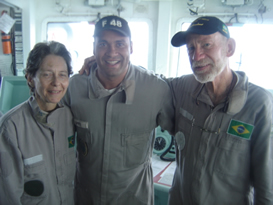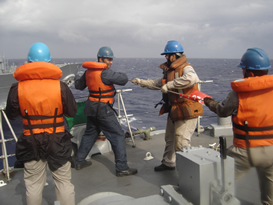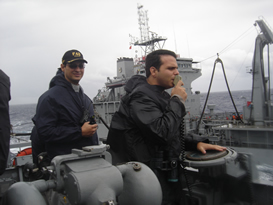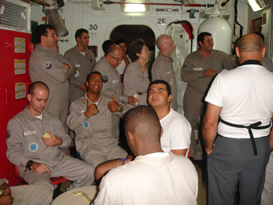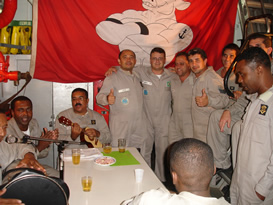DALKIRI is a Sadler 32 (10 m) an English design, built in Cape Town 1986 fibreglass. Dalkiri and crew left Cape Town, South Africa 2003. We visited Namibia and Angola on the west coast of Africa and crossed the South Atlantic, stopping at Ilha St. Helena 2004. Our first port in South America was Rio de Janeiro
We stopped at Anchieta, Saco Riberia, Porto Bela & Florianopolis before sailing to Uruguay after which we continued to Buenos Aires and because it was autumn the clubs were full and we could not find somewhere to stay.
We had always wanted to travel up the Rio Parana since we had first realized that it was possible to sail so far inland in South America. Our original idea had been to reach the Pantanel but it took us 7 months to reach Ascuncion, Paraguay. It was very hot as it was December and with many mosquitoes, so we decided to turn back. We travelled very slowly on the Rio Paraguay and Rio Parana, sailing only during the day and visiting the many small towns along the river in Argentina. South Africa is a very dry country with only a few rivers, none of them navigable. So for us this great river system was something special. We also went a short distance up the Rio Uruguay.
2008 we crossed the Rio de la Plata again and set sail from Punte del Este for Africa. Bad weather made Heather very seasick and she begged to return to land. The nearest port was Rio Grande, Brasil, which we found charming but cold. We stopped at Laguna and Sao Francisco do Sul before leaving from Florianopolis for South Africa.
We left beginning of April 2009; the winds were very light or from the SE so our progress was very slow.
April 30 - Baramoter falling, wind NNW10 all well aboard. After hearing a weather forecast on the HF radio of 30 knots for the next day, we put 2 reefs in the main, furled away some of the genoa and prepared extra food. The wind increased steadily & about 1am we were hit by a very strong gust. The boat was knocked on its side and water poured in. Jess went out to bring us back upright and we ran before the storm. Heather was below with the water up to her knees so she started pumping and praying. We pumped until daylight and the level came down but still seemed to be coming in. Everything was wet and all sorts of things floated past while we pumped.
We ae Amateur Radio operators and every morning we called in to a Maritime Net organized by Amateur operators in South Africa. So on 1 May we called MAYDAY Emergency. The radio conditions were very bad but luckily a North American yacht 'Faraway' who was several hundred kilometres further east heard and relayed our call and position to the radio net. They contacted the MRCC in Cape Town, who contacted the MRCC Brasil, in Rio de Janeiro. (Maritime Rescue Coordination Centre)
We kept pumping on and off that day, the wind was still strong and the waves big, (5m SW 25+).
May 02 Saturday - Both sails had been badly torn but we were too busy pumping to worry. Jess managed to get them down and rig the inner fore-stay with a small stay-sail to give us some steerage to help the wind vane steering'. The dinghy tied on the coach roof had been knocked loose and also had to be secured. But the wind generator and solar panels worked well and kept the wet batteries well charged. That night we fell asleep on top of the wet bedding still in life-jackets and rain suits.
May 03 Sunday - Found some dryer clothes, put space blancket over wet beds and tried to call on radio. Then we realized that the radio was not working and so that was the next important thing to do.
May 04 Monday - We hear Cape Town Radio talking to yacht Faraway and we call and give our new position. We are relieved to have contact again and they are happy to know we are still ok and where we have drifted to. When the Navy found us we were about 200 NM away from our Mayday position. Cape Town radio informs us that there is a Brasilain Navy frigate on the way to rescue us. 2 Merchants ships arrive at dark and we can see their lights They guard us like giant guardian angels, all night.The sea and winds were now much calmer and less water was coming in.
May 05 Tuesday - The remaining ship ARTIC TRADER, remains close to us making a radar target for the Navy, as they cannot see DALKIRI (plastico). 1120 BR. The ship relays a radio message from the frigate BOSISIO, that the helicopter is 14 mins away.
The helicopter drops a diver into the calm sea and he swims about 150m to DALKIRI, climbs aboard and produces instructions in English of procedures for the rescue. Jess jumps into the water and the diver swims with him to below the helicopter where he is helped into the sling and winched aboard. The helicopter returns to the frigate 25 miles away.
The diver returns to DALKIRI chatting to Heather to keep her mind busy. She operates the radio because Jess is deaf. The helicopter returns; it is Heather's turn to jump into the sea. The diver returns again to the yacht to pick up our water-proof cannister and documents
DALKIRI looked as she usually did, sitting in a calm sea, as if she could continue - it was a very difficult moment, leaving her.
Aboard the frigate we were given a medical examination, hot showers, navy overalls and lunch.
We cannot say how thankful we are to the Captain and crew of BOSISIO, the helicopter crew and diver.
May 06 Wednesday - We use the ships phone to tell our family in South Africa we are safe.
Frigate BOSISIO meets with the Navy tanker to refuel at sea because she is at the end of her range, having sailed over 2000 km from the Brasil coast to rescue us. We were allowed to stay on the bridge to witness this interesting operation.
The crew aboard the frigate were very kind, sharing the comforts of their ward-room and opening their hearts to us.
May 09 Saturday - We arrive at Niteroi, RJ with the Navy brass band and the TV waiting for us. Then they brought us to this wonderful Clube Naval.
